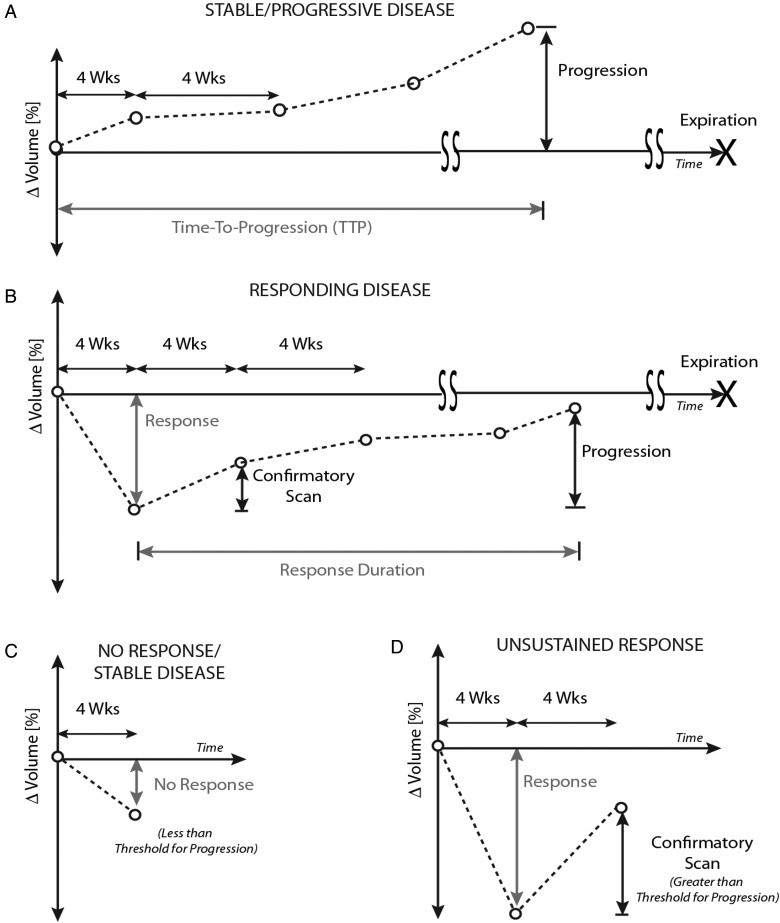Fig. 1.
Definition of tumor response to therapy. (A) Definition of time-to-progression (TTP) and/or progression-free survival (PFS). Tumors that are stable or not responding must show an increase in enhancement beyond a specific threshold from baseline to be deemed “progression”. The time from initiation of drug to progression is defined as TTP. (B) For “responding disease”, tumors must show a decrease in more than a specific threshold of change in size at some point during their therapy. This must be verified with a confirmatory scan 4 weeks following the scan with the largest response. This confirmation scan must not show tumor growth more than the threshold of progression, as defined from the smallest volume. Progression is then defined when the tumor grows to more than the threshold of change in size compared with the smallest volume. The “response duration” is defined as the time between the smallest volume, determined to be beyond the response threshold, and the time of progression. Landmark overall survival (OS) is determined from the time between the smallest volume, determined to be beyond the response threshold, and the time of expiration. (C) An example of “no response”, in which the tumor does not shrink beyond the optimal threshold. (D) Another example of “no response” is when the tumor shrinks beyond the optimal threshold, but the confirmatory scan increases more than the threshold defined for progression compared with the smallest volume. This is an unsustained response, and thus is not considered a responder.

